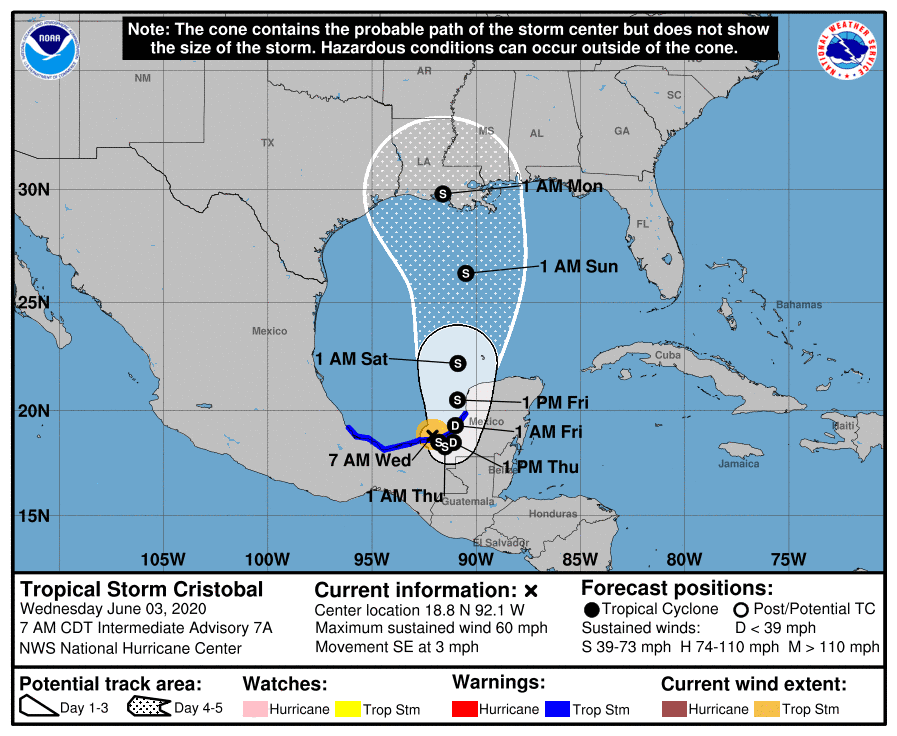
Tropical Storm Cristobal is forecasted to remain west of Florida this week but expected to bring heavy rains to the Sunshine State before making landfall toward the center of the U.S. Gulf of Mexico.
As of Wednesday morning, the storm made landfall in southern Mexico and is expected to travel upward of the Mexico coast, leaving states such as Texas and a portion Florida panhandle in the path of uncertainty over the weekend.
The storm is delivering heaving rains and winds upwards of 60 mph.
A lot is happening this #WednesdayMorning as @NOAA's #GOESEast watches the #sunrise across the #Atlantic. We can see #TropicalStorm #Cristobal in the #GulfofMexico as well as a large low pressure system swirling near Europe.
Explore the world: https://t.co/1BImgN6NGN pic.twitter.com/QAgndQKdel— NOAA Satellites (@NOAASatellites) June 3, 2020
“Cristobal is forecast to begin moving northward across the Gulf of Mexico on Friday, and there is a risk of storm surge, rainfall, and wind impacts this weekend along portions of the U.S. Gulf Coast from Texas to the Florida Panhandle,” the hurricane center said Wednesday morning.
“While it is too soon to determine the exact location, timing, and magnitude of these impacts, interests in these areas should monitor the progress of Cristobal and ensure they have their hurricane plan in place.”
According to the National Hurricane Center, Cristobal is the third named storm of the 2020 Atlantic hurricane season which began on Monday.
The National Oceanic and Atmospheric Administration is encouraging residents to prepare for “above normal” storm activity this season.
According to outlooks by NOAA’s Climate Prediction Center, the Atlantic coast can expect a 60% chance of an above-normal season and only a 10% chance of a below-normal season.
“NOAA’s analysis of current and seasonal atmospheric conditions reveals a recipe for an active Atlantic hurricane season this year,” said Neil Jacobs, Ph.D., acting NOAA administrator.
Officials are urging residents to reconsider and adjust their emergency plans and supplies to factor in the impact of the COVID-19 pandemic.
“Social distancing and other CDC guidance to keep you safe from COVID-19 may impact the disaster preparedness plan you had in place, including what is in your go-kit, evacuation routes, shelters and more,” said Carlos Castillo, acting deputy administrator for resilience at FEMA.



